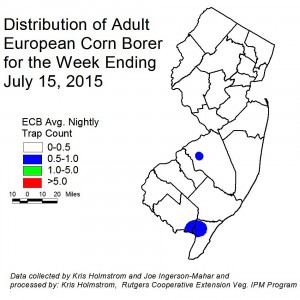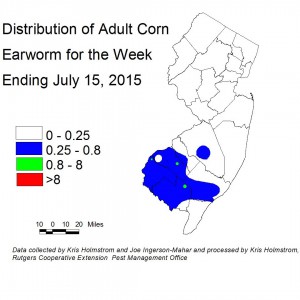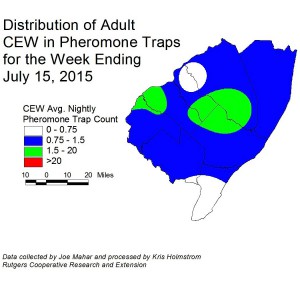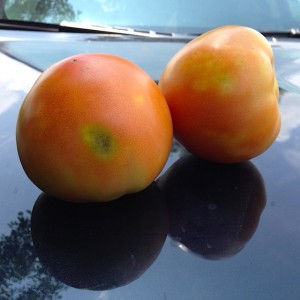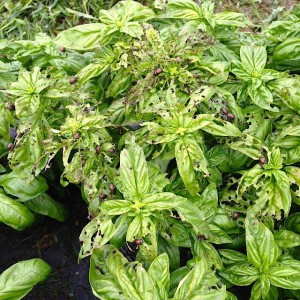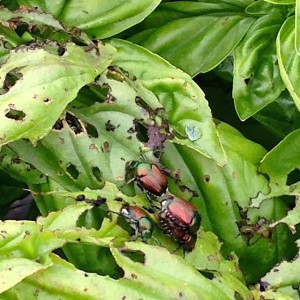Sweet Corn
There is still very little European corn borer (ECB) adult activity at this time. Few individuals have been captured throughout NJ this past week (see ECB map). ECB infestations are absent from sweet corn plantings. We would expect to see signs of the second flight within the next week or so.
As always, consider treating when the number of infested plants in a 50 plant sample exceeds 12%. Any planting remaining at or above threshold as it proceeds to full tassel should be treated, as this is the last stage at which ECB larvae will be exposed and vulnerable to insecticidal sprays.
See the 2015 Commercial Vegetable Recommendations Guide for insecticide choices.
| The highest nightly ECB catches for the previous week are as follows: | ||
| Belvidere 1 | Eldora 1 | Medford 1 |
| Centerton 1 | Farmingdale 1 | Pedricktown 1 |
| Cinnaminson 1 | Folsom 1 | Tabernacle 1 |
| East Vineland 1 | Green Creek 1 | Woodstown 1 |
There has been a modest increase in catches of corn earworm moths (CEW) in blacklights this past week. Overall activity is still low, and is primarily in Gloucester County and areas to the south (see CEW Map). Catches in states to our south are still low. Increases in the lower mid-Atlantic trap catches will be monitored and reported here in order anticipate increases in NJ.
| The highest nightly CEW blacklight trap catches for the previous week are as follows: | ||
| Pedricktown 2 | East Vineland 1 | Woodstown 1 |
| Centerton 1 | Matawan 1 | |
| Downer 1 | Tabernacle 1 | |
The limited CEW pheromone trap network in the southern counties has captured moths at a rate similar to the previous week. Western Salem and the Atlantic-Camden County border area have the highest activity (see CEW pheromone map). The low number of traps results in broad areas of color within the map. It is critical that growers monitor local CEW moth numbers. At present, light-to-moderate silk spray schedules should be adequate to limit CEW injury as well as to prevent ear damage from ECB or FAW larvae that already inhabit the stalks.
| The highest nightly CEW pheromone trap catches for the previous week are as follows: | ||
| Beckett 3 | Pedricktown 2 | Springdale 1 |
| Elm 2 | East Vineland 1 | Woodstown 1 |
For sinking sweet corn, the following spray schedules are warranted.
Silking Spray Schedules*:
South – 5 days
Central – 6-7 days
North – 6-7 days
Low level fall armyworm (FAW) infestations continue to appear throughout NJ, with highest infestation rates (14%) found in Cape May County. Very few FAW moths have been captured in the region, so the threat of increased infestations in the near term seems low. However, this pest can be devastating to small corn plants. Fields down to seedling stage should be scouted weekly for signs of infestation.
Tomatoes
Recent weather has been conducive for the spread of the late blight. However, other than the two locations in central Morris County, only a very small infection was found near Belvidere in Warren County within the past week. Tomato growers should continue to protect all plantings against this disease, particularly while wet weather persists. The strain found locally is US-23, and can infect tomatoes and potatoes, although no infections on potatoes were found near the affected tomato plantings. Consult the 2015 Commercial Vegetable Recommendations Guide for fungicides effective against late blight.
This week, tomatoes in Hunterdon County have developed fruit injury from stink bugs (see photo). In this case, the stink bugs are the native brown species. Stink bugs are extremely difficult to find in planting, and often the only sign of their presence is from fruit injury, called cloudy spot. Stink bug damage is typically worse during dry weather, as wild hosts become less available to the bugs. This causes them to move into irrigated tomato plantings. With this year’s wetter conditions, it is possible that damage will be minimal. However, if fruit injury is discovered in increasing numbers in the field, or in harvested units, growers may wish to apply insecticides to limit further damage. Consult the 2015 Commercial Vegetable Recommendations Guide for insecticides effective against stink bugs. Bear in mind that these insecticides are broad spectrum, and may result in increased aphid or mite populations.
Peppers
No weevils have been trapped in the past week and as far as known, there are no infested fields.
Brown Marmorated Stink Bug (BMSB)
BMSB numbers remain low in NJ blacklight traps this past week. These catches are too low to create a map. As yet, no fruit injury has been discovered in scouted pepper plantings.
Pumpkins and Winter Squash
A sentinel plot containing susceptible and resistant cucumber varieties, as well as muskmelons, watermelons, acorn and butternut squash and pumpkins has been established at the Snyder Research and Extension Farm in Hunterdon County. The purpose of this plot is to detect the presence of downy mildew (DM) in NJ. Any occurrence will be reported in this newsletter and will also generate an alert to all subscribers. At this time, DM is present on cucumbers in surrounding states. For more information on the regional presence of DM as well as comprehensive, weekly forecasts, see the following website: http://cdm.ipmpipe.org/
The cucurbit downy mildew forecast has NJ at high risk of infection from reported infection sites in neighboring states.
As yet, there are no reports of DM in pumpkins and winter squash. No DM has been found at Snyder Farm to date.
Basil
Although basil downy mildew (BDM) has been reported from southern NJ, the BDM sentinel plot at the Snyder Research and Extension farm is still free of the disease. Japanese beetles, however, are devastating the plots (see photos). Growers should monitor basil plantings regularly to make sure these pests are not causing extensive damage at this time.
